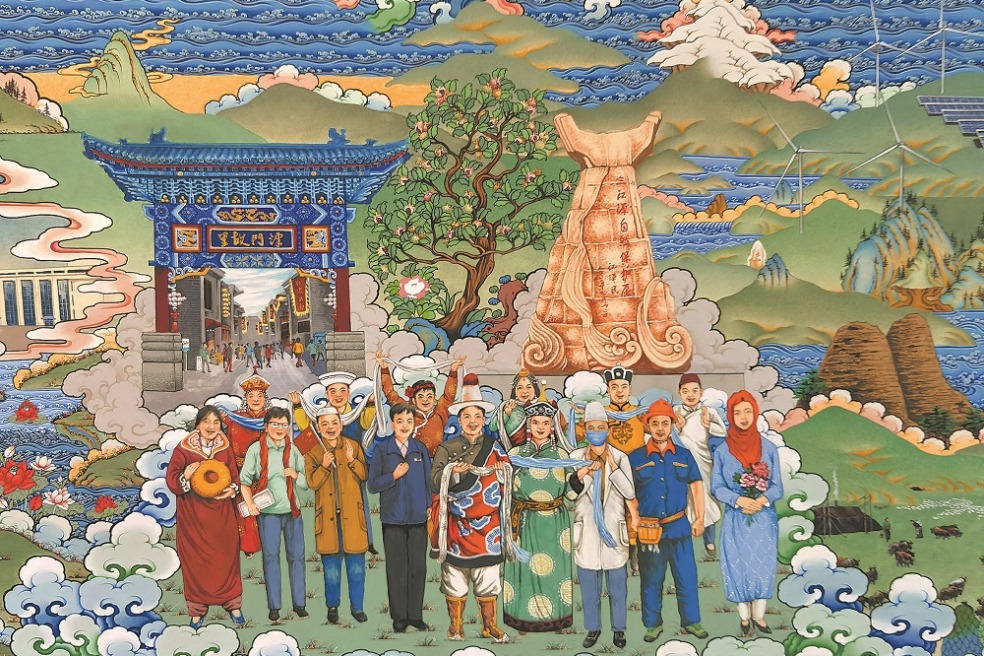Cooperation vital for East Asia

Editor's note: The 2024 International Forum on Regional Cooperation and Development of China, Japan and South Korea and the 21st Northeast Asia Management and Economics Joint Conference was co-hosted by Beijing Foreign Studies University and China Daily from Friday to Saturday. Following are excerpts from the speeches delivered by some of the attendees:
High-tech cooperation crucial for China, ROK
The era of technological competition has arrived, and the vigorous development of national strategic technologies has become a lever for competition between nations. South Korea is committed to developing 12 national strategic technologies through inter-agency collaboration and public-private joint research and development efforts, aiming to become one of the world's top five technology powerhouses by 2027.
Furthermore, South Korea will strengthen its scientific and technological cooperation with China, fostering a cooperative relationship based on mutual benefit and focusing on complementary cooperation in high-tech industries to leverage the significant roles of both countries in the global technology ecosystem.
Haeng-A Seo, chief representative of Korea-China Science & Technology Cooperation Center
Seoul and Beijing should jointly set AI standards
China has been expeditiously developing an independent AI semiconductor industry, including building AI semiconductor industry clusters. It is important, therefore, that South Korea-based small and medium-sized enterprises participate in these clusters and integrate with China's AI semiconductor ecosystem and the country's semiconductor market, the largest in the world.
While local governments are playing a crucial role in this process, the central government appears potentially constrained by the escalating US-China differences. However, the central government should take the lead in setting standards and implementing regulations for AI technology, including AI semiconductors, perhaps in collaboration with major enterprises, because local governments often act in response to market demands, without keeping long-term market requirements in mind.
The recent AI Seoul Summit has been praised for its efforts to set global AI safety standards. However, a strategic approach is required to set global AI technology standards. The South Korean government's commitment to develop more than 250 international standards across 12 advanced industrial sectors by 2030, including semiconductors, AI, future vehicles, robotics and quantum technology represents a significant stride in this direction.
So South Korea and China should collaborate to set new, appropriate AI technology standards, fostering innovation and cooperation in this rapidly evolving field.
Nam Eunyoung, a professor at Seoul-based Dongguk University
China, Japan, ROK need to finalize trilateral FTA
China has signed 22 free trade agreements with 29 countries and regions, with 10 more being in the negotiation stage and eight under study, while Japan has signed 21 FTAs, in effect, with one each with South Korea and Canada on hold, and South Korea has inked 21 FTAs, in effect, with 59 countries, with two ratified and nine in the negotiation stage.
China, Japan and South Korea have established a network of free trade areas, continuously extending the reach of their FTAs. The coverage of their FTAs has been increasing, with the three countries boasting increasingly widening free trade areas. Amid all this, the Regional Comprehensive Economic Partnership agreement provides more room for higher-level tariff reduction, especially if China, Japan and South Korea conclude their free trade agreement, which is under negotiation.
By leveraging the institutional benefits of the RCEP, the three countries can create an "RCEP+China-Japan-South Korea" free trade area, which would further boost trade, help build political mutual trust and promote the common development of the three countries.
Liu Wen, a professor at the School of Business, Shandong University
Disputes should be resolved through talks
Thanks to the imbalanced China-South Korea trade and economic cooperation structure, competition is becoming increasingly evident. Since the establishment of diplomatic relations between China and South Korea in August 1992, South Korea had been enjoying a trade surplus with China. But the trend reversed in May 2022, and now the ROK has a trade deficit with China — and the new trend may continue.
With the technological gap between China and South Korea continuing to narrow, the competition between the two countries in technology and products is becoming more pronounced. South Korea's import of products from China, including chemical materials, semiconductors and automobile components — sectors in which South Korea previously enjoyed absolute advantage — has been growing.
Even investments between China and South Korea are unbalanced, with Chinese investment in South Korea facing restrictions, while the China-South Korea economic structure is transitioning from a complementary economic structure characterized by a vertical division of labor to one with a horizontal division of labor.
China-South Korea economic and trade relations today are marked by both competition and cooperation, with the momentum of economic cooperation being increasingly influenced by the two sides' overall political relations. So efforts should be made to first improve China-South Korea political ties, possibly through cooperation in various fields.
Issues and disputes that have arisen in the course of the past 32 years of China-South Korea relations have been resolved or reasonably managed by the two sides. As for some sensitive issues that remain unresolved, these should be addressed by the two sides through dialogue and negotiation. And the issues that cannot be resolved in the short term should be properly managed.
Li Chengri, a research fellow at Chinese Academy of Social Sciences
Relationship-based governance a new trend
The shift toward relationship-based governance within the East Asian production network is becoming prominent. This trend is driven by several key factors.
The first factor is a decrease in product modularity due to technological advancements. As technology progresses, products become less modular, increasing the need for close collaboration among supply chain partners.
The second factor is a rise in demand for high value-added products. In fact, consumer preferences are becoming increasingly inclined toward high value-added products.
And the third factor is enhanced capabilities of developing countries' enterprises, because they are investing more in research and development, so as to boost productivity, thereby increasing their production capacity.
The case of Apple and its Chinese suppliers exemplifies this shift from a captive model to a relationship-based model. By investing heavily in its supply chain in China, Apple has fostered close ties with its suppliers to make high value-added smartphones. This includes customizing components, designing production processes and employing engineers to work closely with suppliers.
Over time, both Apple and its suppliers have increased their reliance on each other's capabilities, leading to close coordination throughout the research, prototyping and production processes.
Ding Ke, director and chief researcher at the Asia Economic Research Institute of the Japan External Trade Organization
Measures needed to deal with low birth rates
Japan is currently facing issues such as declining birth rates and excessive urbanization. These phenomena should be understood from the perspective of spatial economics, and policies, such as supporting the development of small and medium-sized enterprises, should be taken to increase the birth rate.
These policies aim to enhance the birth rate by creating high-quality employment opportunities and encouraging young people to stay in rural areas. Additionally, the importance of regional industrial policies in addressing the issue of low birth rates should never be underestimated.
Nobuaki Hamaguchi, an economist at the Kobe University.
The views don't necessarily reflect those of China Daily.

Today's Top News
- Rise of macro-regions and dollar's decline
- Training helps to empower Global South
- Country to cut costs of preschool education
- Pakistani minister hails high-tech ties with China
- China-US trade ties key for world economy
- Prospering Xizang sees surge in overseas visitors






























